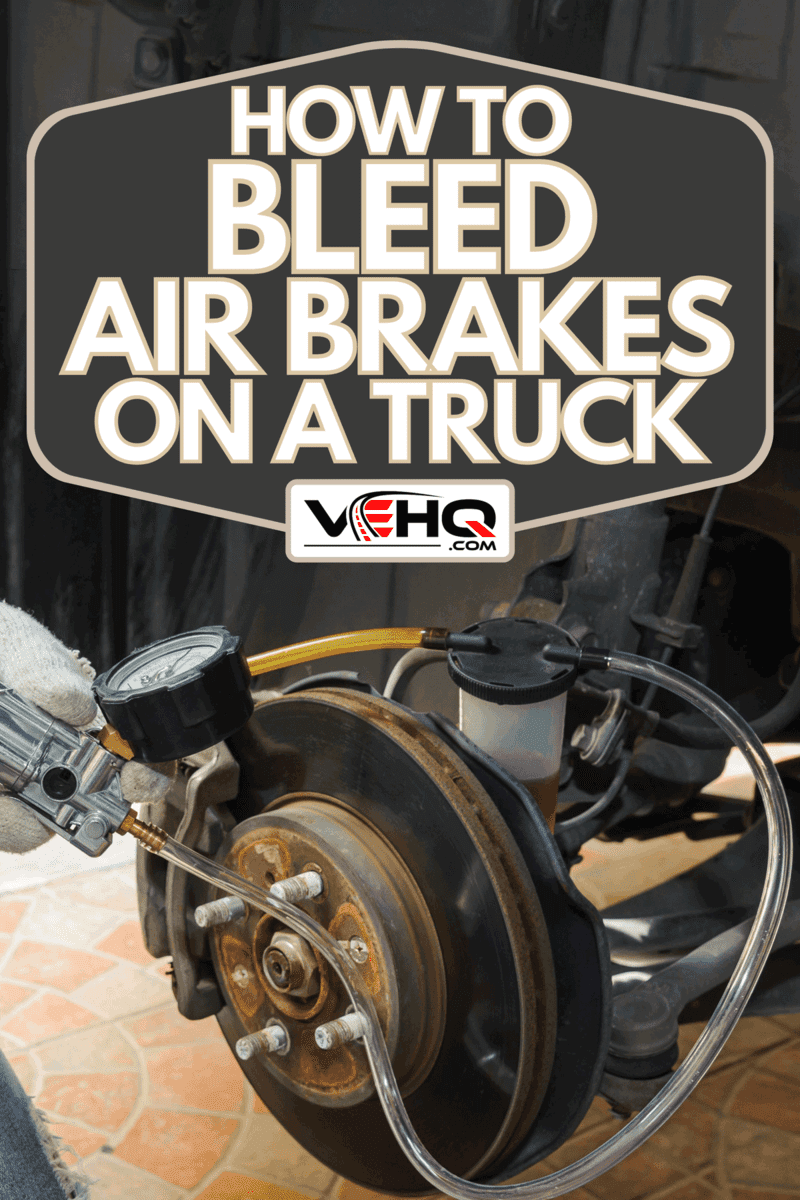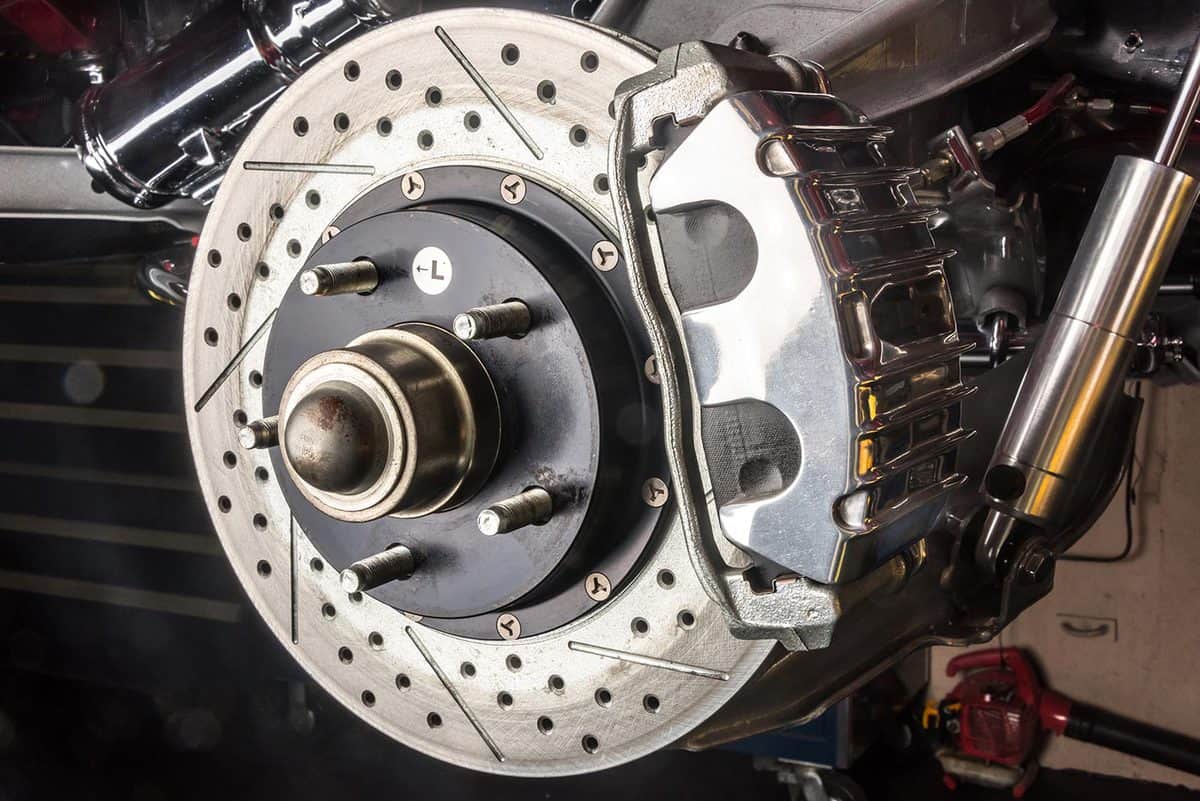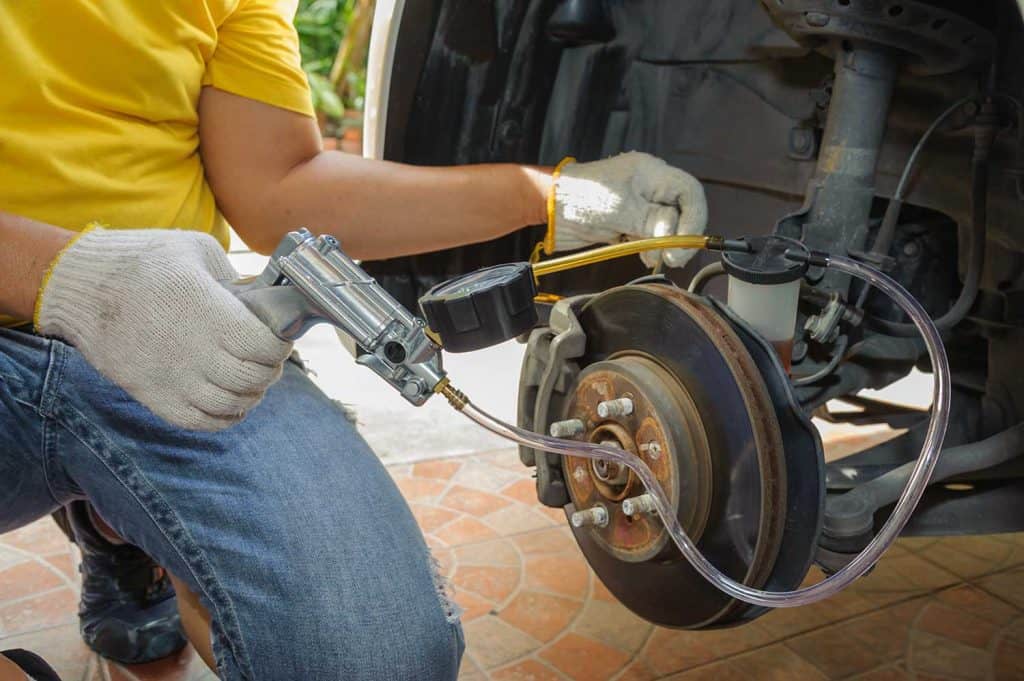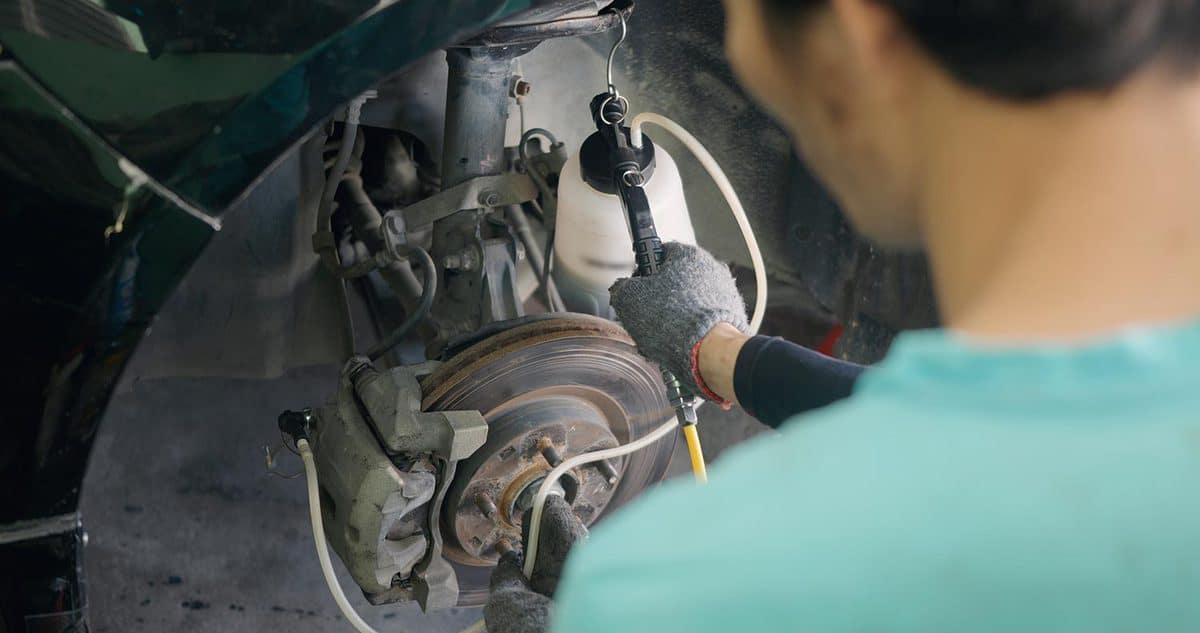Bleeding the air in your brakes is essential for maintaining your truck. However, how do you bleed air brakes on your own? We have done the research to help you do this!
To bleed air brakes, follow these simple steps:
- First, take off the cap of the master cylinder and ensure that it is topped off with fluid (put the master cylinder cap back on after filling).
- Now, put your truck onto a lift and remove the tires.
- Next, locate the brake bleeder fitting behind the brake disk.
- Use a wrench that fits over the brake bleeder fitting.
- Put a rubber hose on top of the brake bleeder fitting.
- Connect the rubber tube into a bottle filled with brake fluid (quarter full).
- Have a helper press on the brakes as gradually loosen the brake bleeder fitting.
- Repeat this until no more air is coming into the bottle.
- Once complete, tighten the brake bleeder fitting and put the tire back on.
As you can see, there is a specific process to bleeding air brakes. That's why in this article, we will take a closer look at how to do this and why it is crucial. In addition, we will also answer other commonly asked questions about bleeding air brakes on a truck, so read on!

How To Bleed Air Brakes On A Truck
The purpose of bleeding the air brakes on a truck is to remove any trapped air and replace it with fresh fluid. This will help keep the brakes functioning correctly and ensure that they are safe to use. When you bleed air brakes, you should do it after a few hours of driving and once your brakes have cooled down.
Another important thing to remember is to ensure the master cylinder is topped off with fluid. You will go through a lot of the fluid during this process, so keeping the fluids at the correct level is essential.
You should not try to bleed air brakes when the truck's brake fluid level is low or when the brake system warning light is on. Both of these conditions indicate a problem with the braking system, and it will need to be repaired for you to bleed the brakes successfully.
When bleeding air brakes, you should also check your parking brake cables and make sure they are moving correctly. When this step is complete, it's a good idea to insert a pin or other device into the power control module [PCM] before filling the master cylinder reservoir with brake fluid.
How to Bleed Air Brakes with a Hand Pump
Another option for bleeding air brakes is to use a hand pump instead of the brake bleeder fitting. The process is a little different, but it can be quicker and more manageable in some ways.
However, it has been reported that you can lose up to a third of the fluid from the reservoir when using this method. That is why it is important to ensure you keep your master cylinder at recommended level throughout the brake bleeding process.
Bleeding air brakes on your truck with a hand pump is similar to the process mentioned earlier in this article. However, if you purchased a bleed kit, then follow these steps:
- Ensure that the truck is on a level surface for this step.
- Remove the cap from the master cylinder and fill it with brake fluid. You may need to use an air pressure gun or pedal depressor to speed up this step.
- Connect a piece of rubber tubing to the brake bleeder fitting on your truck's rear axle. You will need a wrench that fits over the fitting to do this properly.
- Attach a hand pump to the other side of the rubber tube and start pumping until you have bled all of the air from your brakes. It may take a few minutes to do this.
- Check to see if the air is gone from your brakes by moving the truck slightly using the pedals or handbrake. If there is still air, repeat until it moves freely.
- Replace the cap on the master cylinder and store away your tools until you need them again!
How long does it take to bleed air out of tires?
It usually takes about 5 minutes to bleed the air out of the tires. However, this may vary depending on how much air is in the system.
If you have difficulty bleeding the brakes, there may be a blockage in the line. In this case, you will need to remove the blockage and start the bleeding process again.
Do you bleed brakes with cap on or off?
Some people prefer to bleed the brakes with the cap on, while others like to remove it. There is no right or wrong answer for this question, as both methods will work.
However, brake fluid is very hygroscopic, and if it does spill into the engine compartment, it can cause damage. Therefore, keeping the master cylinder cap on during the brake bleeding process is safer.
Do you bleed brakes with the engine running?
No, you should never bleed the brakes with the engine running. This can cause air to be drawn into the brake system and damage the components.
It is essential to have a firm grip on the brake pedal when bleeding the brakes, as you will need to keep your foot on it for several minutes. You should also ensure that your truck is in the park or neutral gear when performing this procedure.

Why are my brakes spongy after bleeding?
If your brakes are still spongy after bleeding, there may be a blockage in the line. In this case, you will need to remove the blockage and start the bleeding process again.
It could also mean that the brake fluid is contaminated. Contamination usually means that there is air or moisture in the system. If there is moisture, you will need to replace the brake fluid and bleed the air out of your brakes again.
Do all four brakes need to be bled?
Typically, all four brakes need to be bled to get rid of the air in the brake system. However, one or two may still contain some air even after you have bled them. If this happens, repeat the process until they are free from any bubbles coming out of them.
When do I need to bleed the air out of my brakes?

You will have to bleed the air out of your brakes if you notice a difference in performance after changing brake pads or calipers. This is usually a clear sign that there is a lot of air in the system.
If there is a significant change in braking performance, you should bleed them as soon as possible.
Do I need to bleed my brakes after changing a caliper?
If you only replace one or two brake calipers, you will not need to bleed the air out of your brakes. However, it is still recommended that you do this anyway to eliminate any excess air in the system.
When should I bleed my brakes?
Typically, you should bleed your brakes every two to three years. However, there are several warning signs to watch for that mean it's time to bleed your brakes.
If you notice a significant difference in braking performance, if your brakes are making a grinding noise, or if they feel spongy, then it is time to bleed them. You should also bleed your brakes after changing brake pads or calipers.
It is important to remember that brake fluid should never be allowed to come into contact with the paint on your truck. Even a small amount of brake fluid can damage or strip the paint if it is not cleaned up quickly.

Can I bleed my brakes while they are hot?
You should never try to bleed your brakes while they are still warm from driving around. This will cause the brake fluid to become foamy and bubbly, which will make it challenging to get the air out of the system. Bleeding the brakes when they are cold is the best way to remove the air from them.
So, now you know a little more about bleeding your brakes. Be sure to keep this information in mind when performing this procedure on your truck.
Final Thoughts
Bleeding your brakes is a necessary procedure that should be done every two to three years. If you notice any warning signs listed here, it is time to bleed your brakes. Lastly, it is a good idea to have someone help you when bleeding air brakes on your truck!
If you like this article, then check out our other maintenance guides:
How To Get A Dent Out Of A Truck – 6 DIY Methods For Truck Body And Bed!
Dashboard Lights Flickering Car Won't Start – What Could Be Wrong?
Rattling Noise In Car When Accelerating—What Could Be Wrong?
